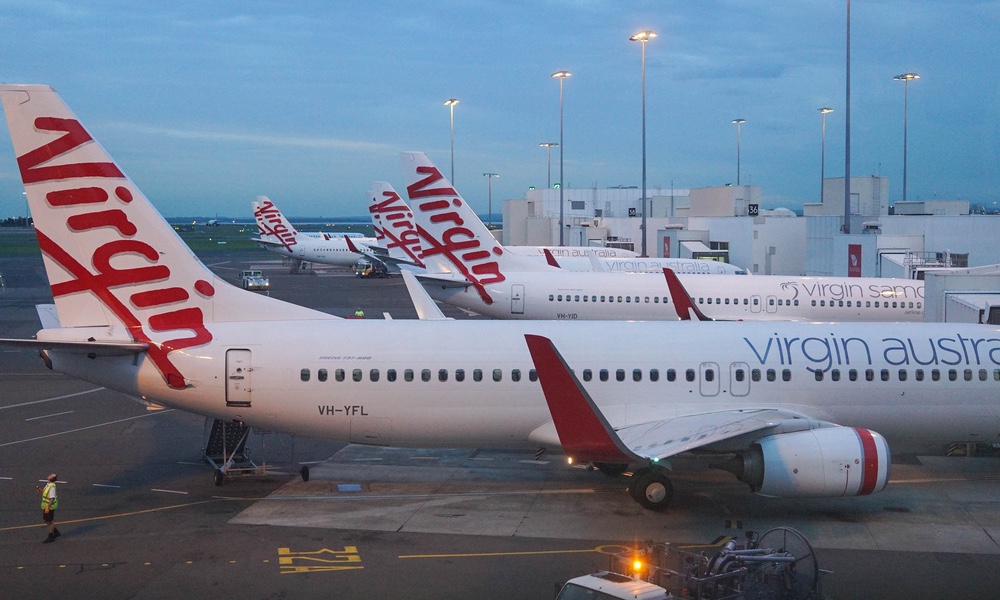This Airline Just Banned ALL MacBooks from Its Flights
 Credit: Kate33 / Shutterstock
Credit: Kate33 / Shutterstock
Toggle Dark Mode
Apple’s recent recall of specific 15-inch MacBook Pro models may be having far-reaching consequences for air travellers, with at least one airline announcing a blanket ban on all MacBooks from being placed in checked baggage on its flights.
A few weeks ago, the U.S. Federal Aviation Administration (FAA) announced that specific MacBook Pro models — those identified in a recent Apple recall — would be banned from U.S. flights completely, with the European Union Aviation Safety Agency (EASA) following suit. Both agencies insisted that the decisions were a standard part of its safety procedures when dealing with products that have been recalled for battery issues, and not based on any decision to single out Apple or its products specifically.
In issuing the ban, both the FAA and EASA issued noticed to the airlines in their jurisdictions to make them aware that the affected MacBook Pro models fall under the standard safety directives and should not be brought on flights, but leaving it up to the airlines themselves to decide how to best enforce these restrictions.
A Blanket Ban
Now at least one airline, Virgin Australia, has decided that it’s not worth the risk, and according to 9to5Mac has issued a blanket ban prohibiting ALL MacBooks from being placed in checked baggage on its flights due to fears of battery fires.
Due to a worldwide recall by Apple of a number of Apple MacBook batteries, ALL Apple MacBooks must be placed in carry-on baggage only. No Apple MacBooks are permitted in checked in baggage until further notice.
Virgin Australia Dangerous Goods Notice
That said, this may not be as serious as it sounds, as MacBooks are still permitted in carry-on baggage in the cabin, which is likely where most people will prefer to carry their laptops anyway, although it seems like Virgin Australia may still reserve the right to prohibit the specifically recalled models from being brought on board, or at least used while in-flight.
The blanket ban is also somewhat understandable, since it’s a challenge for airport staff to identify the problematic MacBooks, as pretty much all 15-inch MacBook Pro models released in the past several years look virtually identical. Then there’s the additional complication of identifying which. MacBook Pro models were previously affected but have since been serviced under the recall notice, and therefore no longer pose a problem. This is all extremely difficult when scanning checked baggage, where the owner is not present and checking serial numbers isn’t really feasible.
Understandably, airport security staff and flight crews will likely have a much easier time identifying the affected MacBook Pro models in carry-on baggage, plus should an affected model slip through and actually catch fire, it’s far easier to deal with in the cabin than in the cargo hold.
Which MacBooks Are Affected?
The recall actually only affects a relatively small number of all of the MacBook Pros that are out there, but in this case, “relatively small” still equates to almost a half a million units that were sold in North America. Of these 458,000 units, only 27 users have reported incidents where the battery has overheated, so it still seems like a low risk problem. However, Apple — and the airlines — clearly aren’t taking any chances.
Specifically, however, the recall only affects certain 2015 15-inch MacBook Pro models — the “MacBook Pro (Retina, 15-inch, Mid 2015)” model, as identified under About This Mac from the Apple menu in the top-left corner of the screen.
If you’re not using one of these, you don’t need to worry at all — although you should still plan to carry it in your cabin baggage if you’re taking a flight, and bring any necessary paperwork to respond to any questions on whether it’s affected.
If you are using a mid 2015 15-inch MacBook Pro, you can check your serial number against the list of affected models on Apple’s Battery Recall Program Page. If it’s not on this list, we’d still recommend printing out a confirmation of this fact before showing up at the airport to help prove it to airport and airline staff.
If it is on the recall list, you’ll want to get it serviced by following the instructions provided on Apple’s website, and then once the battery has been replaced, bring the service confirmation with you so that you can show airline staff that your particular MacBook Pro is no longer a threat to airline safety.
Considering the difficulty in identifying specific MacBook Pro models, especially in checked baggage, it’s safe to assume that other airlines will be following Virgin Australia’s lead here, so if you plan to travel with your MacBook, it’s best to keep it with you in your carry-on bag and have as much documentation as possible to demonstrate that your specific MacBook Pro is not a problem.






